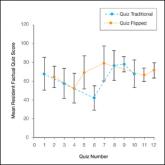Article

A Comparison of Knowledge Acquisition and Perceived Efficacy of a Traditional vs Flipped Classroom–Based Dermatology Residency Curriculum
- Author:
- Lauren N. Pontius, MD
- Joanna Hooten, MD
- Erin Lesesky, MD
- Caroline Rao, MD
- Matilda Nicholas, MD, PhD
- Rebecca Bialas, MD
- Beiyu Liu, PhD
- Cynthia L. Green, PhD
- Amber Reck Atwater, MD
Flipped and traditional classroom models were compared in the Duke University Medical Center (Durham, North Carolina) dermatology residency...
Article

Pityriasis Rubra Pilaris and Severe Hypereosinophilia
- Author:
- Lulit Price, MD
- Erin Lesesky, MD
A 63-year-old man presented with a prior diagnosis of severe psoriasis affecting the extremities, neck, face, and scalp of 1 year’s duration. He...
